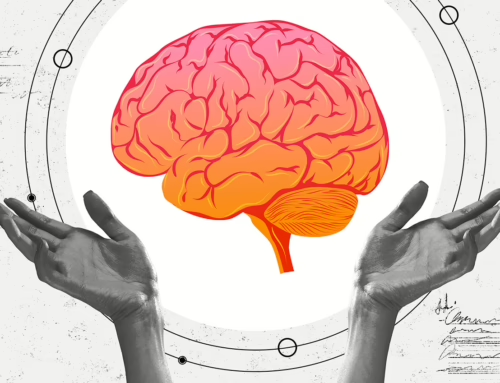Unraveling the Most Common Mental Illnesses in the US: The Power of Therapy
Mental health is a crucial aspect of overall well-being, yet it often doesn’t receive the attention it deserves. In the United States, millions of people experience various forms of mental illness each year. Recognizing the symptoms of these conditions and understanding the benefits of therapy can help individuals lead healthier and more fulfilling lives. In this blog post, we’ll delve into the most common mental illnesses in the US and explore how therapy can foster a positive impact on mental health.
1. Anxiety Disorders
Anxiety disorders are the most widespread mental health concern in the United States, affecting over 40 million adults. These disorders include generalized anxiety disorder (GAD), panic disorder, social anxiety disorder, and specific phobias. Symptoms range from excessive worry, panic attacks, and avoidance of social situations to irrational fears. Therapy, especially cognitive-behavioral therapy (CBT), has proven to be highly effective in managing and reducing anxiety symptoms.
2. Major Depressive Disorder
Major depressive disorder (MDD) affects about 17 million American adults annually. It is characterized by persistent feelings of sadness, hopelessness, and a lack of interest in activities once enjoyed. MDD can also cause physical symptoms like fatigue, insomnia, and weight fluctuations. Therapy, such as CBT and interpersonal therapy, helps individuals identify negative thought patterns, develop healthy coping mechanisms, and improve communication skills, ultimately alleviating depressive symptoms.
3. Bipolar Disorder
Bipolar disorder, formerly known as manic-depressive illness, affects approximately 2.8% of the US adult population. This condition is marked by extreme mood swings, including periods of mania and depression. Psychotherapy, alongside medication, is a vital component of treatment for bipolar disorder. Therapy can help individuals recognize early warning signs of mood shifts, manage symptoms, and develop healthy coping strategies.
4. Post-Traumatic Stress Disorder (PTSD)
Post-traumatic stress disorder affects around 3.6% of the US population and can develop after experiencing or witnessing a traumatic event. Symptoms include flashbacks, nightmares, severe anxiety, and uncontrollable thoughts related to the event. Evidence-based therapies, such as trauma-focused CBT and eye movement desensitization and reprocessing (EMDR), are beneficial in helping individuals process and overcome their traumatic experiences.
5. Obsessive-Compulsive Disorder (OCD)
Obsessive-compulsive disorder affects about 1.2% of the US population. It is characterized by recurring, unwanted thoughts (obsessions) and repetitive behaviors (compulsions) that can interfere with daily functioning. Exposure and response prevention (ERP), a type of CBT, is a highly effective therapy for OCD, as it helps individuals confront their fears and resist the urge to engage in compulsive behaviors.
The Power of Therapy:
Professional therapy can have a transformative impact on individuals suffering from mental illnesses. Therapists are skilled in identifying and addressing the root causes of mental health concerns, providing tailored treatment plans, and offering support throughout the recovery process. Therapy helps individuals develop healthier thought patterns, improve coping skills, and ultimately enhance their overall well-being.
Mental health is a vital aspect of our lives, and understanding the most common mental illnesses in the United States is essential for promoting awareness and seeking appropriate help. Therapy can be a powerful tool in managing these conditions, helping individuals regain control of their lives and achieve optimal mental health. If you or someone you know is struggling with mental health issues, consider reaching out to a qualified therapist for support and guidance.
Unraveling the Most Common Mental Illnesses in the US: The Power of Therapy
Mental health is a crucial aspect of overall well-being, yet it often doesn’t receive the attention it deserves. In the United States, millions of people experience various forms of mental illness each year. Recognizing the symptoms of these conditions and understanding the benefits of therapy can help individuals lead healthier and more fulfilling lives. In this blog post, we’ll delve into the most common mental illnesses in the US and explore how therapy can foster a positive impact on mental health.
1. Anxiety Disorders
Anxiety disorders are the most widespread mental health concern in the United States, affecting over 40 million adults. These disorders include generalized anxiety disorder (GAD), panic disorder, social anxiety disorder, and specific phobias. Symptoms range from excessive worry, panic attacks, and avoidance of social situations to irrational fears. Therapy, especially cognitive-behavioral therapy (CBT), has proven to be highly effective in managing and reducing anxiety symptoms.
2. Major Depressive Disorder
Major depressive disorder (MDD) affects about 17 million American adults annually. It is characterized by persistent feelings of sadness, hopelessness, and a lack of interest in activities once enjoyed. MDD can also cause physical symptoms like fatigue, insomnia, and weight fluctuations. Therapy, such as CBT and interpersonal therapy, helps individuals identify negative thought patterns, develop healthy coping mechanisms, and improve communication skills, ultimately alleviating depressive symptoms.
3. Bipolar Disorder
Bipolar disorder, formerly known as manic-depressive illness, affects approximately 2.8% of the US adult population. This condition is marked by extreme mood swings, including periods of mania and depression. Psychotherapy, alongside medication, is a vital component of treatment for bipolar disorder. Therapy can help individuals recognize early warning signs of mood shifts, manage symptoms, and develop healthy coping strategies.
4. Post-Traumatic Stress Disorder (PTSD)
Post-traumatic stress disorder affects around 3.6% of the US population and can develop after experiencing or witnessing a traumatic event. Symptoms include flashbacks, nightmares, severe anxiety, and uncontrollable thoughts related to the event. Evidence-based therapies, such as trauma-focused CBT and eye movement desensitization and reprocessing (EMDR), are beneficial in helping individuals process and overcome their traumatic experiences.
5. Obsessive-Compulsive Disorder (OCD)
Obsessive-compulsive disorder affects about 1.2% of the US population. It is characterized by recurring, unwanted thoughts (obsessions) and repetitive behaviors (compulsions) that can interfere with daily functioning. Exposure and response prevention (ERP), a type of CBT, is a highly effective therapy for OCD, as it helps individuals confront their fears and resist the urge to engage in compulsive behaviors.
The Power of Therapy:
Professional therapy can have a transformative impact on individuals suffering from mental illnesses. Therapists are skilled in identifying and addressing the root causes of mental health concerns, providing tailored treatment plans, and offering support throughout the recovery process. Therapy helps individuals develop healthier thought patterns, improve coping skills, and ultimately enhance their overall well-being.
Mental health is a vital aspect of our lives, and understanding the most common mental illnesses in the United States is essential for promoting awareness and seeking appropriate help. Therapy can be a powerful tool in managing these conditions, helping individuals regain control of their lives and achieve optimal mental health. If you or someone you know is struggling with mental health issues, consider reaching out to a qualified therapist for support and guidance.




